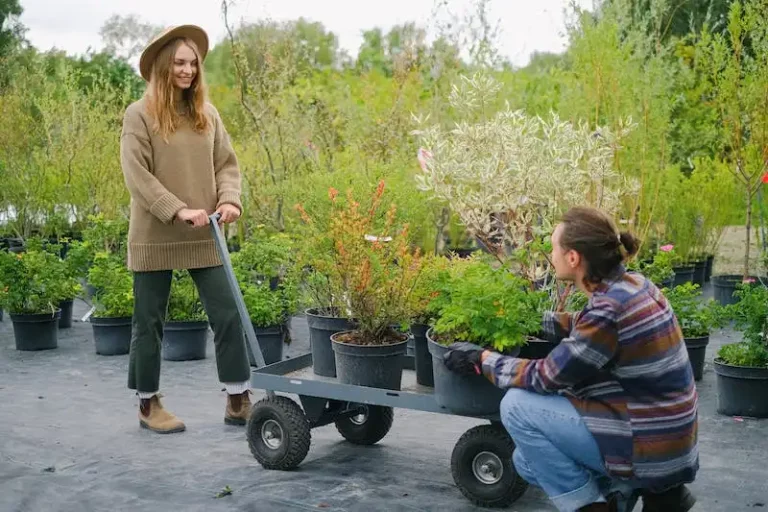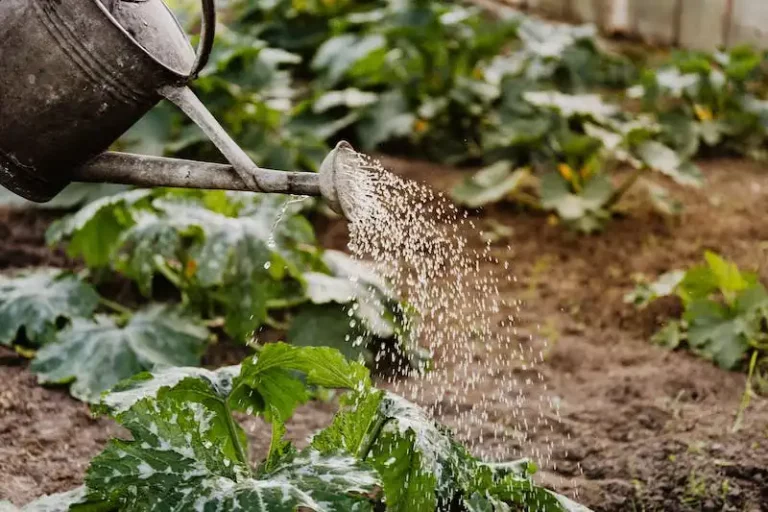When it comes to flowering plants, fuchsias are a true heaven for garden enthusiasts. With their excellent display of colorful and unique flowers, fuchsias have become a popular choice for gardens of all types. They come in a variety of sizes, from small bonsai-like types to standard-sized plants that can grow to impressive heights and spreads.
One of the key factors in caring for fuchsias is finding the right place to grow them. Fuchsias thrive in well-draining soil that is kept moist but not waterlogged. They prefer locations with partial shade, as direct sun can scorch their delicate leaves and flowers. If you live in an area with frosty winters, it’s important to protect your fuchsias from freezing temperatures.
Fuchsias are relatively simple to care for, but there are a few important tasks that should not be overlooked. Regular watering is essential, especially during dry periods or hot summer months. Fuchsias are also heavy feeders and benefit from regular fertilizing. Using a balanced fertilizer will promote healthy growth and blooming.
Pruning and pinching back fuchsias will help maintain their shape and encourage fuller growth. This can be done in early spring before new growth begins. It’s important to be careful when pinching back fuchsias, as they have delicate stems that can easily snap or become wilted if mishandled.
What sets fuchsias apart from other plants is their unusual combination of woody stems and delicate flowers. This unique botanical characteristic makes them a focal point in any garden or flowerbed. Fuchsias are also great for use as screening or climbing plants, thanks to their height and spread. They can even be grown as potted plants, making them a versatile choice for any garden or patio.
Like any plant, fuchsias can be susceptible to diseases and pests. Regular inspection is important to catch any issues early on. Common problems can include aphids, whiteflies, and mites. Using natural remedies such as neem oil can help protect fuchsias from these pests. Additionally, amending the soil with organic matter and ensuring good air circulation can help prevent fungal diseases.
When it comes to fuchsias, there are countless hybrids and varieties to choose from. Different types of fuchsias bloom at different times of the year and come in a range of colors, from vibrant pinks to deep purples and whites. Whether you’re looking for a showy display or a delicate accent, there is a fuchsia for every gardener’s taste.
Whether you’re a seasoned fuchsia grower or just starting out, it’s always a good idea to ask questions and learn more about these beautiful plants. There are many resources available online and through local gardening communities where you can find answers to any fuchsia-related inquiries. With the right care and attention, your fuchsias will flourish and provide a stunning addition to your garden.
How to Grow Care for Fuchsia Flowers
Fuchsia flowers are known for their vibrant and colorful blossoms, making them a popular choice for both indoor and outdoor gardening. If you are interested in growing fuchsias and taking good care of them, here are some tips to help you succeed:
Growing Fuchsia Plants:
1. Choose the right location: Fuchsias prefer a spot with partial shade, as direct sunlight can scorch their leaves. Morning sun and afternoon shade is ideal.
2. Planting fuchsias in containers: Fuchsias can be grown in containers, which allows you to move them around based on their sunlight and temperature needs. Use well-draining containers with holes at the bottom to prevent waterlogging. Plastic containers are a good option.
3. Soil and watering: Fuchsias require well-draining soil that is rich in organic matter. Water them regularly, keeping the soil moist but not soggy. Avoid overhead watering, as wet leaves can promote disease.
4. Fertilizing: Fuchsias benefit from regular feeding. Use a balanced liquid fertilizer every two to three weeks during the growing season (spring to early fall). Follow the package instructions for application rates.
Caring for Fuchsia Plants:
1. Pruning: Pinch back the growing tips of fuchsias to promote bushier growth and more blooms. Prune any dead or diseased branches, and remove any suckers that may be growing from the base of the plant.
2. Winter care: Fuchsias are not frost-tolerant, so they need protection during the colder months. Depending on the type of fuchsia you have, you can bring them indoors, cover them with mulch, or provide frost protection. Some fuchsias may die back to the ground and re-emerge in spring.
3. Repotting: Fuchsias should be repotted every two years or when they outgrow their containers. Use a well-draining soil mix and choose a pot that is slightly larger than the current one.
4. Deer and toxic berries: Fuchsias are generally deer-resistant, which is good news for gardeners dealing with deer problems. However, it’s worth noting that the berries of some fuchsia varieties can be toxic to humans and pets. Make sure to keep an eye on children and pets around these plants.
Types of Fuchsias:
There are many different types of fuchsias available, including upright and trailing varieties. Some popular fuchsia types include:
1. Upright fuchsias: These fuchsias grow in an upright habit and can reach heights of up to eight feet. They make excellent ornamental plants and can be used as a focal point in garden beds or placed alongside a fence.
2. Trailing fuchsias: Trailing fuchsias have a more cascading growth habit and are perfect for hanging baskets or container gardening. They will often grow eight feet or longer and can create a beautiful display of colorful flowers.
Remember to choose fuchsia varieties that are well-suited to your climate and gardening conditions. Some varieties may thrive in coastal areas, while others prefer more inland locations.
By following these tips and providing proper care, you can enjoy the beauty and vibrant colors of fuchsia flowers in your garden or home. Happy growing!
BASICS
- Fuchsia plants can thrive in a variety of climates, including both hot summers and cold winters. They have a hardy nature, making them suitable for any botanical garden or home garden.
- There are many different types of fuchsia plants, each with its own unique habits and attributes. Some varieties have a trailing habit and are perfect for hanging baskets or cascading down slopes. Others have an upright habit and can be grown as standard plants or trained into a climbing form.
- Fuchsia plants are known for their beautiful blooms. They come in a wide range of colors, from vibrant pinks and purples to delicate whites. The flowers are often bell-shaped, and the wings of the flowers add to their unique beauty.
- When it comes to growing fuchsia plants, they require a balanced approach to care. They thrive in slightly acidic soil that is well-draining. Regular watering is important, but make sure not to overwater, as this can cause the roots to rot.
- Fuchsia plants are popular for their ability to attract hummingbirds and butterflies. To keep them happy, place your plants in a location that receives both sun and shade throughout the day. Too much heat or direct sunlight can cause the leaves to wilt, while too much shade can hinder blooming.
- If you are planting fuchsia plants in containers, make sure to choose a container with good drainage. Fuchsia plants have a tendency to become root-bound, so be sure to repot them every one to two years. Use a well-balanced fertilizer once a week during the growing season to promote healthy growth and abundant blooms.
- Pruning is an important part of fuchsia plant maintenance. Remove any dead or wilted blooms to encourage new growth. In the spring, prune back any dead or damaged branches to keep the plant looking tidy. Regular pruning also helps to maintain the plant’s shape.
- Fuchsia plants can be overwintered in colder climates. To do this, bring the potted plants indoors before the first frost. Place them in a cool, dark location, such as a basement or garage, and water them sparingly. They will go dormant during the winter months and can be brought back outside in the spring.
- Pests can be a problem for fuchsia plants, especially aphids and spider mites. To keep them at bay, regularly inspect your plants and remove any pests you find. You can also use insecticidal soap or neem oil as organic pest control methods. Be sure to follow the instructions on the product label.
- Overall, caring for fuchsia plants is relatively easy. With the right conditions and proper maintenance, you can enjoy their beautiful blooms and attract a variety of pollinators to your garden. Whether you’re a beginner or an experienced grower, fuchsia plants are a popular choice for adding color and interest to your outdoor space.
Botanical name
The botanical name for the fuchsia plant is Fuchsia. This full, rounded plant is a popular choice among gardeners for its stunning and colorful blossoms. Fuchsias come in a variety of sizes and types, making them an excellent filler or spiller in garden plantings.
Fuchsia plants are best grown in partial shade, as they do not tolerate full sun well. They also prefer moist soil, so it’s important to water regularly, especially during the hot summer months. It’s best to water at the base of the plant to avoid wetting the foliage, as this can lead to diseases.
Caring for fuchsia plants in winter can be a bit tricky. Fuchsias are not frost-tolerant, so if you grow them outdoors, they must be moved indoors or protected from frost. When temperatures swing between freezing and thawing, it’s important to be careful with watering, as the soil can become waterlogged and lead to root rot.
Fuchsias are known for their bright and eye-catching blooms, but their foliage is equally stunning. The leaves are typically green, but some hybrids can have variegated or red-tinged foliage. However, it’s important to note that fuchsias are poisonous if ingested, so be cautious if you have pets or children around.
To keep your fuchsia plants looking their best, regular fertilizing is recommended. Use a balanced fertilizer every two to three weeks during the growing season to promote healthy growth and abundant blooms. Additionally, pruning fuchsias during the early spring months helps to shape the plant and promote new growth.
With their beautiful flowers and lush foliage, fuchsia plants are a heavenly addition to any garden. Whether you use them as standalone plants or in mixed container arrangements, their vibrant colors and graceful shape are sure to make a statement. So go ahead and add some fuchsias to your garden – you won’t be disappointed!



